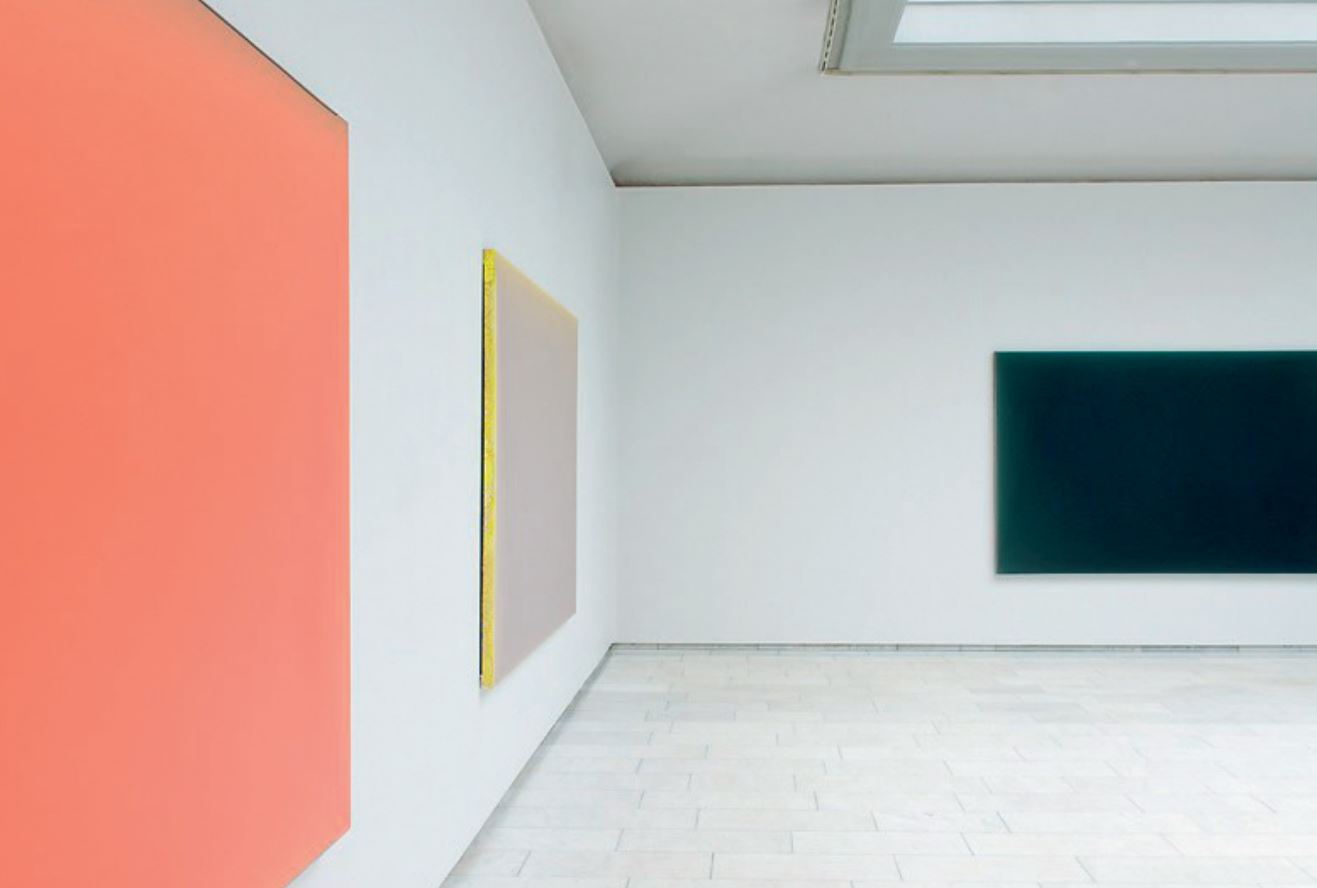Pihl derives his colors by adding layer upon layer of paint. Mixing, blending till a dominant color appears. The different layers shimmer in a distance, shadows or memories of colors that were there before and now collectively form a new color. It shows when you look at the sides of the paintings where you still see drippings and jets of color that can be traced back to the final painting. The color of the painting draws you in, it lures you to look again and again. In Pihl’s work the painting itself is the center of attraction, a window to a world that is undefined but aesthetically pleasing and that refers to hidden meanings, messages from beyond the physical reality of the painting in the museum space. The painting is an object but in itself materializes meaning, contemplation.
I am fascinated by how contemporary culture and our lives are involved in aesthetics. We are all tuned in to absorb an extraordinary amount of visual information represented by images and all kinds of well presented commodities. To give one example: In New York there are a lot of 99-cent stores with cheap merchandise that is very creatively produced to look useful or valuable. They are fascinating to study, both for the visual information, but also for the ethical structure: Most of the commodities are “useless” and probably manufactured under circumstances not acceptable, either in relation to the workers or the environment. These products are nevertheless produced with an incredible knowledge of how aesthetic information (color/form/design) has a deep visual impact. The drive behind my artistic activity is the immense production of aesthetics western culture has developed in relation to capitalism and global expansion. Beauty and value are confused with perfection (as a representation for truth), and we are getting more and more addicted to it. I wanted to use that confusion and misunderstanding as an aspect of my intentions. I work the surface towards a very smooth quality, which is easy to mistake as only that. The work appears stress-free at first glance and looks as if it were manufactured. But the artistic tension is complex. Marks from the process, flaws and scratches from the handling, and subtle manipulations of the surface occur and become vital components of the visual contact – and therefore the experience. These veiled manipulations and the sensuality of the surface may stand as metaphors for discovery and detection, processes that provide important information concerning our personal and cultural structures – if activated.
In collaboration with ASAP Gallery.

Exhibitions
Thomas Pihl solo exhibition ” sight specific”
This exhibition shows a selection of paintings and drawings from the show “ Sight Specific” his retrospective presentation at KODE, Bergen Norway in 2021.

